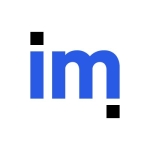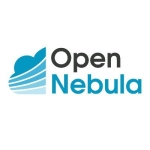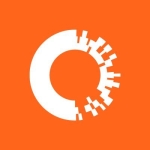What is our primary use case?
We have a group of sister companies with different types of applications, from web-based to server-installed.
We segment our clusters into different areas for each company to use, from development to staging to production.
Currently, we mainly use the production area, and our staging is off. With the new NCM, we may use a different hardware or environment.
Since moving to Nutanix, the development and support teams prefer it more.Due to differences in hardware and workload deployments.
What is most valuable?
One of the solution's greatest strengths is its "Single pane of glass" feature, which allows users to access all pertinent data in one location immediately upon logging in. Additionally, the solution's ease of deployment and mobility are notable aspects that I personally find appealing.
During my attendance at Nutanix, I personally discovered a significant benefit. Although we currently operate a separate division for our public cloud infrastructure, we have yet to leverage the potential of integrating it with Nutanix Cloud Manager (NCM) or Nutanix Clusters (NC).
What I've learned is that we can seamlessly migrate and manage the details displayed on NCM's dashboards, consolidating everything into a unified environment.
While we haven't taken advantage of this opportunity yet, I am eager to take full advantage of it in the future.
What needs improvement?
Our sister company currently uses an outdated database technology, Sybase, which presents challenges in migrating to a newer database. Despite our efforts to encourage them to move to a different database, the company's 25 years of code and data basic make it difficult to do so.
We are open to any level of support or guidance that can help us manage the Sybase database, even if it's not a fully managed solution.
Direction on how to scale, improve, and optimize tables and queries within Sybase would be greatly appreciated.
For how long have I used the solution?
I have been using Nutanix Cloud Manager (NCM) for less than a year.
The company has been using Nutanix for the past four or five years and has gone through different versions. However, we have been using NCM for about a year to a year and a half.
What do I think about the stability of the solution?
I am satisfied with the stability of the system. Our engineers have had no issues accessing it and I have not received any reports of bugs or accessibility problems.
What do I think about the scalability of the solution?
This solution effectively addresses our current automation requirements, especially with regard to repetitive tasks that the team needs to learn how to automate.
As our company expands, we are interested in shifting the bulk of our workloads away from the public cloud and into our private cloud clusters.
Nutanix Cloud Manager (NCM) offers a lot of automation capabilities that we can take advantage of in the future. While there are already some basic automation features like Nutanix Move, there is significant potential for additional automation within NCM.
This automation will greatly assist us in scaling our operations without the need for manual repetition. As we continue to explore NCM and prepare for transitioning away from the public cloud, we can leverage a substantial amount of automation to streamline our processes.
The scalability of the system is straightforward, even from a hardware standpoint.
Simply adding servers to the data center and integrating them into the cluster is a remarkably effortless process.
I have not come across a solution that offers such ease of scalability.
How are customer service and support?
I have had the opportunity to engage with Nutanix support through various channels, including email, meetings, and post-installation calls. Even when we added two nodes to our infrastructure last year, Nutanix engineers were on-site to install the cluster, and I must say, they provided excellent service.
The support we received from Nutanix through emails has been excellent, with detailed and concise information provided.
Our experiences with Nutanix's account management and technical account management calls in early 2019 were extremely productive. They were highly focused, aiming to gather detailed information about our environment and workloads. This allowed them to effectively assist with scaling out, gaining a thorough understanding of our environment, and troubleshooting as needed. The level of support provided by Nutanix has been consistently outstanding.
Although I am not directly involved, from my observations, everything has been great, including the engineers who assisted us in adding nodes to our cluster. They were very helpful and knowledgeable.
I would rate the technical support a nine and a half out of ten.
On a personal level, I would rate Nutanix at a nine and a half. However, this rating is based on my limited direct involvement and is not a comprehensive assessment from a Nutanix perspective. Taking into account the algorithm used to evaluate performance, my interactions with Nutanix have been highly positive.
How was the initial setup?
I did not participate in the initial setup process.
What was our ROI?
We have experienced a significant return on investment (ROI) through our implementation of Nutanix. Initially, we started with two Nutanix systems, using them in our staging environment. However, as COVID-19 emerged in 2019, we acquired six additional nodes and deployed them in our production environment. Almost immediately after putting them into operation, we witnessed the tangible value they brought. The returns generated from this implementation have been substantial.
We initiated a gradual migration process, gradually transferring workloads into the Nutanix environment. As our workload demands grew, we reached capacity in the system by the end of last year. To accommodate this expansion, we have already acquired and installed a new cluster. Additionally, we have a dedicated disaster recovery (DR) site, and our objective is to transform this DR site into a fully operational production site by deploying another new cluster there.
On one side, we have our production environment, while on the other side, we have our disaster recovery (DR) setup. As we continue to witness the positive impact and returns on investment (ROI), we anticipate further growth in our Nutanix infrastructure. Initially, there was some hesitation and uncertainty, but once we experienced the immediate benefits and ROI, we realized the immense value Nutanix brings to our operations.
Implementing Nutanix brings both cost and time benefits. With an initial investment, the focus shifts toward recovering and maximizing the value of that investment. In contrast, when relying solely on the public cloud, there is a constant ongoing investment and potential challenges in controlling costs. While efforts are made to maintain control, it can still be a never-ending endeavor. However, by adopting Nutanix, engineers can quickly grasp and adapt to the system, making informed decisions and judgment calls more efficiently. This ease of learning and system familiarity empowers them to navigate and optimize the infrastructure with confidence.
With the ease of use and automation provided by Nutanix, our engineers can make informed decisions on workload management such as migration, reduction, or scaling up. This saves them time and provides opportunities for personal and professional development.
Which other solutions did I evaluate?
We evaluated AWS as a file management system, and it appears to be a possible solution.
When it comes to setup, both AWS and Nutanix offer attractive features from a management perspective. However, AWS can sometimes be a bit confusing, requiring repetitive actions and causing potential challenges.
On the other hand, Nutanix, particularly with the support of NCM and its accompanying university resources, simplifies the transition from learning to live environments.
The comprehensive coverage in the university program facilitates easier implementation in the actual environment, further aided by features like the test drive, which allows for experimentation without concerns about breaking anything. This emphasis on ease of use was the primary topic of discussion.
From my personal preference, having everything consolidated in a single pane of glass is important, and Nutanix excels in this aspect.
While AWS has recently introduced cost statistics upon login, Nutanix had already implemented this feature earlier.
Not only does Nutanix provide a comprehensive overview, but it also allows for effortless navigation into deeper insights with just a click. In contrast, AWS requires more extensive digging or clicking to access detailed information, making the process less user-friendly compared to Nutanix.
What other advice do I have?
I would rate Nutanix Cloud Manager (NCM) a ten out of ten.
Disclosure: My company does not have a business relationship with this vendor other than being a customer.



















